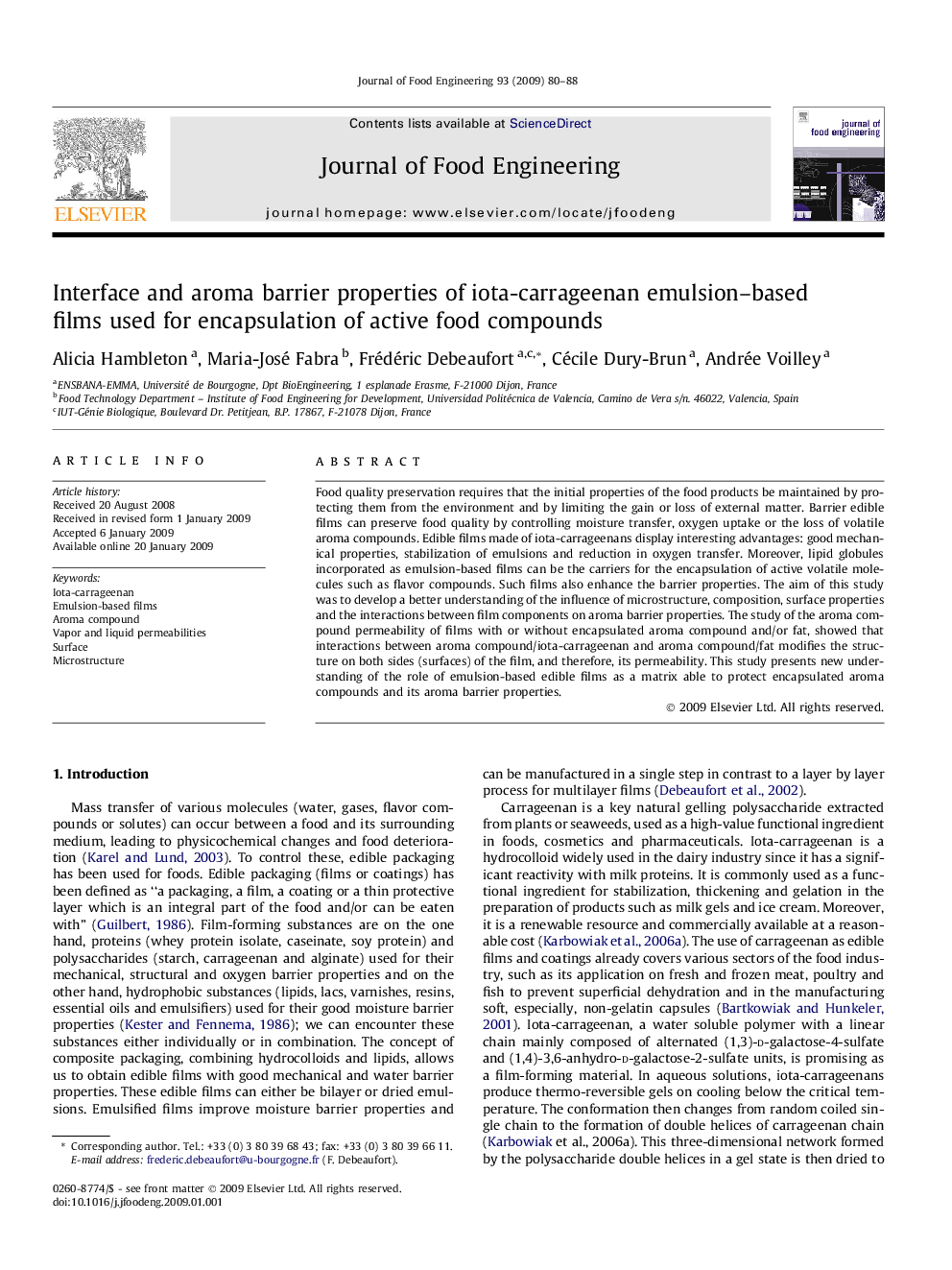| Article ID | Journal | Published Year | Pages | File Type |
|---|---|---|---|---|
| 224660 | Journal of Food Engineering | 2009 | 9 Pages |
Food quality preservation requires that the initial properties of the food products be maintained by protecting them from the environment and by limiting the gain or loss of external matter. Barrier edible films can preserve food quality by controlling moisture transfer, oxygen uptake or the loss of volatile aroma compounds. Edible films made of iota-carrageenans display interesting advantages: good mechanical properties, stabilization of emulsions and reduction in oxygen transfer. Moreover, lipid globules incorporated as emulsion-based films can be the carriers for the encapsulation of active volatile molecules such as flavor compounds. Such films also enhance the barrier properties. The aim of this study was to develop a better understanding of the influence of microstructure, composition, surface properties and the interactions between film components on aroma barrier properties. The study of the aroma compound permeability of films with or without encapsulated aroma compound and/or fat, showed that interactions between aroma compound/iota-carrageenan and aroma compound/fat modifies the structure on both sides (surfaces) of the film, and therefore, its permeability. This study presents new understanding of the role of emulsion-based edible films as a matrix able to protect encapsulated aroma compounds and its aroma barrier properties.
